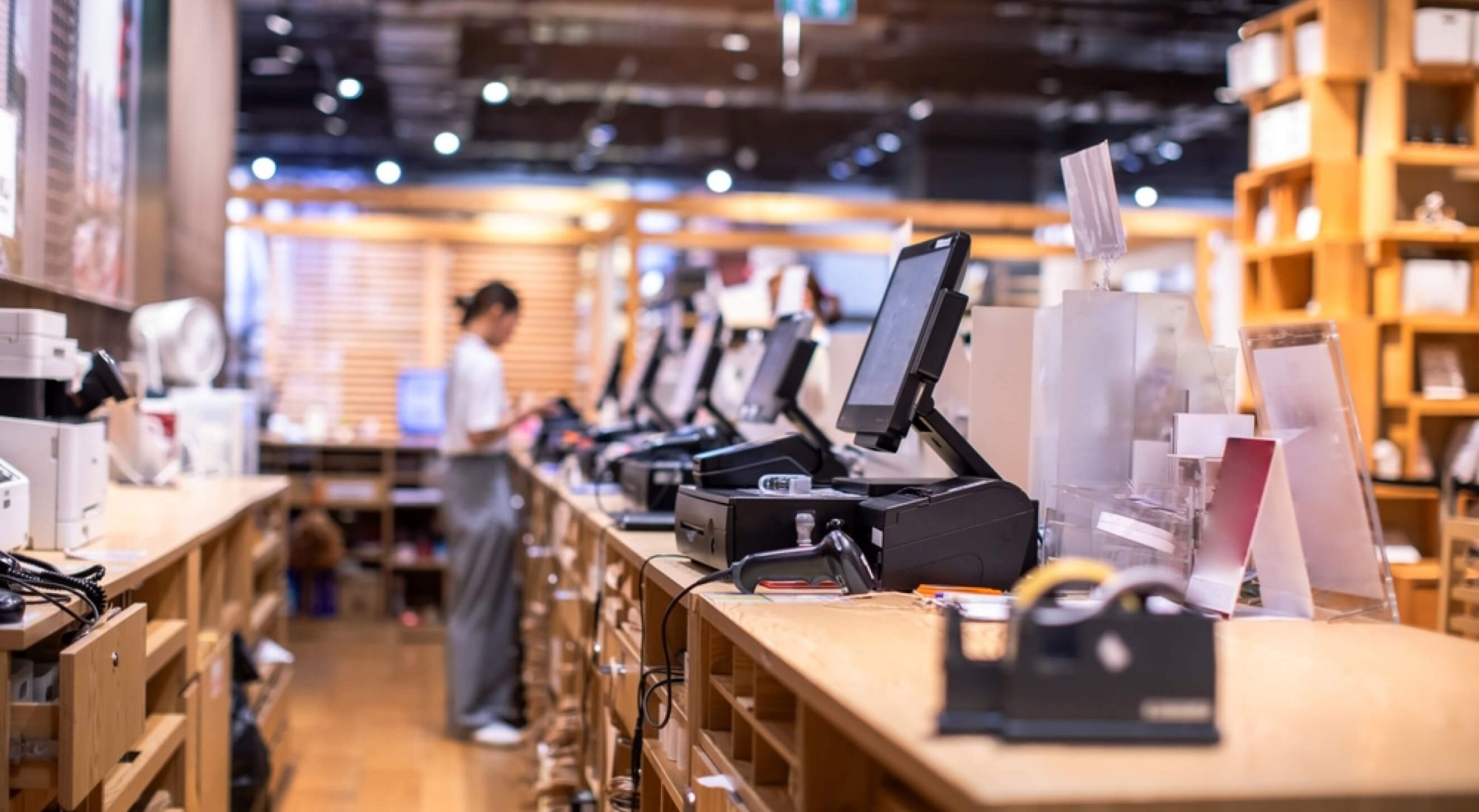Top 15 employee engagement activities in retail sector in 2025

Imagine a relay race. Each runner depends on the smooth handoff of the baton—not just speed, but timing, trust, and teamwork. If one runner hesitates or fumbles, the whole team feels the impact.
The retail workplace is much the same. From sales associates to store managers, everyone plays a part in carrying the momentum forward. Employee engagement activities are like practice sessions—they strengthen connection, boost morale, and build confidence in each handoff.
In 2025, where customer experience is everything, these small moments of team-building aren’t just “nice-to-haves.” They’re the training ground for consistent performance, shared wins, and a culture where every handoff counts.
TL;DR
Why employee engagement is crucial in the retail industry?

TL;DR
Engaged retail employees elevate customer experience by delivering empathy, energy, and product knowledge—leading to higher satisfaction and loyalty. Their attitude directly shapes brand perception.
Engagement curbs high retail turnover by making employees feel valued and visible. It also improves upselling, shift reliability, and in-store morale, all of which drive better sales, teamwork, and consistency in day-to-day operations.
Retail isn’t your average desk job. It's a high-touch, high-pressure environment where your employees often double as brand ambassadors, problem solvers, and part-time therapists—sometimes all within the same hour.
That’s why building a solid employee engagement activity in retail sector settings is non-negotiable for creating a positive work environment.
- Frontline employees shape customer perception: Your retail staff are the first (and sometimes only) human interaction a shopper has with your brand. Engaged employees go beyond transactions—they provide experiences. When staff feel valued, they’re more likely to bring enthusiasm and empathy to each interaction, boosting customer loyalty.
- Higher engagement reduces retail turnover: Retail is notorious for high churn rates, but much of that stems from burnout and feeling invisible. Consistent employee engagement in the retail sector shows workers they’re not just replaceable. This emotional investment is what keeps them around.
- Engagement boosts upselling and sales performance: An engaged employee doesn’t just stand behind the counter—they actively listen, suggest, and convert browsers into buyers. Their confidence and product knowledge naturally lead to more cross-selling and upselling opportunities, driving revenue.
- Morale influences shift consistency and reliability: Disengaged staff tend to call in sick more often or swap shifts last minute. Engaged employees, however, respect their schedule and the team because they feel like they’re part of something that matters. That reliability is retail gold.
- Happy teams reduce in-store conflict and stress: When employees are heard and appreciated, there’s less resentment and friction on the shop floor. Engagement activities can diffuse tension, improve teamwork, and reduce the daily stressors that come from unpredictable customer interactions.
- Engagement directly affects customer satisfaction scores: Want better Google reviews? Start with employee engagement. When your staff feel connected to the company and each other, they naturally provide better service. That reflects in customer ratings, repeat visits, and even word-of-mouth sales.
The high-turnover challenge: Why retailers must invest in engagement

Retailers everywhere feel the sting of high turnover. New hires arrive excited but often exit just as quickly, leaving gaps in service and added recruitment costs. A strong employee engagement activity in retail sector operations is a lifeline for long-term stability, especially when employees feel valued.
- Onboarding costs add up fast: Every time an employee leaves, it’s not just about finding someone new—it’s the time, training, and resources needed to get them store-ready. Investing in engagement reduces churn, saving retailers from the rinse-and-repeat cycle of constant hiring.
- Turnover disrupts team dynamics: When staff constantly rotate, it’s harder to build team chemistry or maintain consistent workflows. Engagement programs help employees feel anchored, which leads to better collaboration, less friction, and smoother shift handovers.
- Experienced staff drive better performance: High turnover means you’re constantly starting over with green recruits. Engaged employees tend to stick around, gain expertise, and become dependable contributors who know how to handle peak hours and tough customers.
- Frequent exits damage brand reputation: Shoppers notice when a store feels unstable or when familiar faces disappear too often. A revolving door of staff signals internal issues. Engagement helps create a stable, positive in-store environment that customers trust.
- Part-timers and seasonal staff need a reason to stay: Even short-term hires can offer long-term value—if they feel connected. When you engage part-time and seasonal retail workers through recognition and feedback, they’re more likely to return, reducing hiring chaos during peak seasons.
Unique workplace realities in the retail sector

Retail work isn’t a standard 9-to-5 job; it’s dynamic, fast-paced, with low work-life balance, and people-heavy. Employees juggle shifting schedules, unpredictable customer moods, and physically demanding tasks.
These realities make building the right employee engagement activity in retail sector environments more complex and more essential.
- Constant foot traffic and multitasking: Retail staff rarely get a breather. They’re assisting customers, restocking shelves, answering questions, and handling payments—all at once. This pace can drain motivation quickly unless engagement strategies are designed to boost daily energy and morale.
- Weekend and holiday shifts are the norm: While others relax on weekends, retail workers are gearing up for peak hours. Consistent engagement efforts show employees that their sacrifice is recognized, making grueling schedules feel less thankless.
- Part-time roles dominate the workforce: A large portion of the retail workforce is made up of part-timers or flexible workers. That makes it even more critical to engage part-time and seasonal retail workers intentionally, so they don’t feel like disposable help.
- Emotional labor is real: Retail employees are expected to smile through complaints, demands, and awkward situations. This emotional toll adds up, which is why employee engagement in the retail sector must address well-being, not just performance.
- Team structures shift constantly: With rotating shifts and changing team pairings, retail employees often don’t work with the same people every day. Peer-based engagement activities can help build camaraderie regardless of who’s on the floor.
- Limited career growth visibility: Many retail workers see their roles as temporary because they don’t see a clear growth path. By tying employee engagement activities for retail staff to development opportunities, you can boost retention and drive motivation.
Benefits of employee engagement for customer service and store performance

Customer satisfaction and store success go hand in hand, but both start with how your team feels at work.
An intentional employee engagement activity in retail sector settings, including employee recognition and rewarding employees, can completely transform how employees show up, serve customers, and drive performance on the floor.
1. Employees deliver more personalized service
Engaged staff take pride in learning customer preferences, recommending the right products, and creating memorable shopping experiences. This leads to greater employee satisfaction, more return visits, and higher customer lifetime value, without pushing for hard sells.
2. Faster issue resolution on the floor
When employees are invested, they don’t dodge responsibility—they take ownership. From handling returns to managing complaints, engaged staff are more proactive, solution-oriented, and confident in de-escalating tense situations.
3. Higher engagement improves visual merchandising
Engaged employees notice the details. They’re more likely to keep shelves neat, displays on-point, and signage accurate—because they care about how the store represents them and the brand.
4. Store metrics see a measurable lift
From conversion rates to basket size, employee engagement in the retail sector has a direct impact on KPIs. A motivated team is simply better at selling, upselling, and delivering results.
5. Fewer checkout errors and inventory mishaps
Disengaged employees make more mistakes. But when staff feel accountable and engaged, they double-check pricing, handle stock carefully, and take the small steps that avoid big problems.
6. Better team vibe reflects on customer experience
Shoppers can sense tension—or positive energy—among your staff. Employee engagement activities for retail staff create a sense of unity, which radiates through friendly, supportive customer interactions that boost in-store satisfaction.
15 Creative employee engagement activities for retail teams

Retail employees are on their feet, juggling customer needs, stock management, and tight schedules, so your engagement strategies need to meet them where they are.
A well-designed employee engagement activity in retail sector environments should energize, involve, and connect people without adding more stress to their day.
Here are 15 retail employee engagement ideas.
- Shift shoutouts wall: Set up a wall in the break room where team members can leave sticky-note compliments for coworkers after each shift. Peer recognition is instant, visible, and energizing—plus, it encourages a culture of appreciation without formal ceremonies.
- “Sell it like you mean it” challenges: Create weekly sales contests around specific products, pairing staff into rotating teams. Winners could get coffee vouchers or a “skip the cleanup duty” pass. It brings gamified fun to upselling while strengthening collaboration.
- Secret shopper surprise: Let employees play the role of the customer and rate service secretly for fun (Not punishment). Then, gather feedback over snacks. It lightens the training process and makes everyone more aware of service quality.
- Five-minute floor huddles: Quick daily huddles before a shift to share wins, goals, and quick updates help align and energize the team. It’s short, consistent, and helps retail teams start the day on the same page.
- “You got caught” cards: Print cards that say, “You got caught doing something awesome!” and encourage managers or peers to hand them out when someone goes above and beyond. These moments boost morale in real time.
- In-store learning bingo: Make a bingo card with actions like “assist a difficult customer,” “restock a high-demand item,” or “mentor a new hire.” It’s a fun way to encourage learning and reward small wins across the team.
- Retail Spotify playlist day: Let each team member curate the in-store playlist once a week (Within brand guidelines, of course). It gives them ownership of the store vibe and adds a personal, engaging touch to shifts.
- Quarterly “retail oscars”: Host light-hearted award ceremonies with categories like “most chill under pressure” or “fastest restocker.” Give out quirky trophies or badges—this not only recognizes but also injects humor into recognition.
- “Suggestion of the month” prize: Encourage employees to submit one store improvement idea each month. Reward the best one with a gift card or shoutout. It proves you’re listening and turns feedback into engagement.
- Snack & solve breaks: Pick one slow shift each week to host a mini-brainstorm over snacks. Discuss problems like Long checkout lines or lost inventory. Involving employees in solutions creates real buy-in and new ideas.
- Team-led mini training sessions: Instead of top-down sessions, let employees volunteer to run 10-minute skill shares—whether it’s folding tricks, product knowledge, or handling complaints. It taps into hidden strengths and increases team respect.
- Social media feature Friday: Let team members opt in to be featured on the store’s Instagram or Facebook, sharing their favorite product picks or behind-the-scenes roles. It creates pride and highlights the humans behind the brand.
- Mystery motivation cards: Once a month, place sealed envelopes in lockers with random feel-good actions—like “leave 5 compliments today” or “treat yourself to something from the staff fridge.” It’s low-cost and keeps morale high.
- Store spirit weeks: Pick themed weeks (Like “throwback thursday” or “retail olympics”) where staff can dress up or join fun challenges. This energizes the space and adds anticipation to regular shifts.
- Peer matchups for cross-training: Pair staff from different departments or shifts to shadow each other for an hour. It promotes empathy, knowledge sharing, and helps engage part-time and seasonal retail workers who often feel disconnected.
Gamification and incentive-based programs for retail employees
TL;DR
Gamification turns repetitive tasks into fun, trackable challenges—driving behavior aligned with store goals. Simple leaderboards or badges tied to tasks like signups or training completion boost energy and focus.
Incentives don’t have to be expensive—small perks like gift cards or early clock-outs work. Especially with seasonal or part-time staff, gamified recognition delivers fast motivation and engagement across all levels.
Gamification isn't just for apps and online quizzes—it’s a smart way to turn daily retail tasks into motivating, measurable challenges.
For retail teams who thrive on energy and real-time feedback, gamifying work can transform routines into something rewarding. And when blended with the right incentives, it becomes a high-impact employee engagement activity in retail sector operations.
You can start small with leaderboard-style competitions, like “most loyalty cards signed up this week” or “fastest restocker of the day.” These bite-sized challenges keep the floor buzzing and help align staff behavior with store goals. And yes, the rewards matter but they don’t have to be costly. Gift cards, prime parking spots, or early clock-outs are surprisingly effective motivators.
Larger programs can include point systems where employees earn digital badges or tokens for completing training, handling customer returns smoothly, or mentoring peers. Redeemable points make the reward cycle tangible and continuous.
These systems are especially useful to engage part-time and seasonal retail workers, who often need quicker recognition due to their shorter tenure.
Gamification keeps retail work fun, competitive (in a healthy way), and engaging. When paired with thoughtful incentives, it boosts morale, encourages healthy habits, and reinforces behaviors that directly improve customer service in retail, all while tracking progress through metrics that matter.
How to engage seasonal and part-time retail workers

Seasonal and part-time employees often get the short end of the engagement stick—limited hours, minimal training, and even less inclusion. But these workers make up a significant chunk of your staff, especially during peak seasons.
A tailored employee engagement activity in retail sector strategies can help them feel like true members of the team, ensuring that employees feel connected.
- Start with a warm, fast-track onboarding: Don’t just throw them into the deep end. A quick, engaging onboarding that covers key expectations, culture, and product knowledge helps part-time workers feel equipped and welcomed right from day one.
- Assign a peer buddy: Pair each seasonal hire with a regular team member for their first few shifts. It gives them a go-to person for questions and makes them feel supported, crucial when they’re joining mid-chaos.
- Celebrate small wins publicly: Seasonal staff don’t always stick around long enough for quarterly reviews, so celebrate their contributions in real time. A shoutout board or weekly “Seasonal Star” recognition can work wonders.
- Include them in store huddles and feedback: Don’t skip over part-timers in meetings or surveys. Actively engage part-time and seasonal retail workers by encouraging their input—this shows their voice matters just as much.
- Offer flexible scheduling when possible: Life can be hectic for seasonal staff, especially students or gig workers. A bit of schedule flexibility builds trust and increases shift commitment—both are big wins during busy periods.
- Incentivize returning seasonal talent: If someone performed well last holiday season, invite them back early with a loyalty bonus or preferred shift slot. Familiar, engaged faces reduce future onboarding time and strengthen store culture.
Peer-to-peer appreciation programs that work in retail
TL;DR
Peer recognition fills the visibility gap where managers can’t always observe frontline wins. Tools like shoutout boards, MVP votes, or appreciation cards reinforce teamwork in high-pressure shifts.
Lightweight systems—like point-based peer awards or kudos via internal apps—build a positive culture. Recognition in huddles or chats makes engagement feel daily and democratic, not just top-down.
Managers can’t see everything—but peers do. In fast-moving retail environments, employees often rely on one another to power through tough shifts, cover gaps, and keep things flowing.
That’s why building a peer-to-peer employee engagement activity in retail sector operations isn’t just feel-good—it’s strategic.
- Shout-out boards in break rooms: Set up a physical or digital board where staff can post notes of thanks or shout-outs. When a team member helps fold a mountain of clothes or smooths over a tricky customer, it deserves recognition—and seeing it in writing boosts morale.
- “Retail MVP of the Week” voted by peers: Let staff nominate one another weekly for going the extra mile. This form of recognition feels more genuine when it comes from peers and reinforces everyday kindness, hustle, or team support.
- Appreciation card exchanges: Provide cards or printed notes that employees can hand out freely when they catch someone doing great work. Over time, these gestures create a culture where support and appreciation flow naturally.
- Kudos via internal chat tools or apps: For teams using apps for scheduling or communication, integrate a “kudos” channel where staff can quickly praise each other. These micro-engagements keep team energy high, even across locations.
- Peer-recognition points system: Create a points-based program where team members can award one another tokens or stars. Points can be exchanged for small rewards—this way, appreciation leads to tangible benefits without relying on management to facilitate every interaction.
- Highlight appreciation in shift huddles: Start team huddles with 1–2 peer shoutouts before diving into goals. It’s a small gesture that sets a positive tone and reminds staff they’re seen, not just by managers, but by their team.
The role of store managers in fostering team engagement

In retail, store managers are the glue holding it all together. They set the tone, pace, and culture on the shop floor. When it comes to driving any employee engagement activity in retail sector operations, managers aren't just participants—they're the front-line leaders who make it stick.
- Leading by example every shift: Engaged managers create engaged teams. When a store manager brings energy, shows up on time, and handles customers with care, it signals to the team what “great” looks like—and encourages others to follow suit.
- Giving real-time recognition: Retail moves fast, so feedback must too. Managers who offer in-the-moment praise for handling a difficult customer or acing a visual display help reinforce good behavior and make employees feel seen.
- Encouraging two-way communication: Managers who ask questions, listen actively, and act on feedback show their teams that communication isn’t one-sided. It creates a safe space, which is especially valuable to engage part-time and seasonal retail workers who may otherwise stay quiet.
- Creating an inclusive shift culture: From rotating break schedules fairly to making new hires feel welcome, managers are the culture keepers. Their effort to build belonging directly impacts how employees engage with the work and each other.
- Supporting learning and cross-training: Managers who actively support development by offering training opportunities, shadow sessions, or product refreshers help employees grow and become more invested in their roles and the brand.
- Holding quick and consistent huddles: A short daily check-in with the team helps set goals, solve quick issues, and acknowledge wins. These micro-moments, when led well, build rhythm and connection, boosting engagement across the floor.
The link between engaged staff and better customer reviews

Happy employees make for happy customers—it’s that simple. In the retail world, your frontline staff directly shape the customer’s in-store experience, which in turn heavily influences reviews, ratings, and word-of-mouth buzz.
Investing in the right employee engagement activity in retail sector settings, making employees feel valued, creates a ripple effect that shows up in your Google stars.
Engaged employees tend to go the extra mile—not because they’re forced to, but because they care. They’re more likely to greet customers warmly, offer thoughtful suggestions, and resolve issues without escalating them. That kind of service doesn’t just complete a transaction; it creates a moment worth reviewing, leading to great customer service.
Conversely, disengaged employees often appear rushed, disinterested, or overwhelmed. Even if your store is clean and stocked, poor service leaves a lasting impression, and unhappy customers are twice as likely to leave a review.
By implementing ongoing employee engagement activities for retail staff, like recognition programs and feedback loops, you create an environment where staff feel valued and empowered by providing professional development opportunities. This energy translates to every customer interaction.
Also, when you engage part-time and seasonal retail workers, their enthusiasm can influence peak-season reviews. In a competitive retail landscape, positive reviews can be the edge your brand needs—and they start with an engaged team ready to serve with purpose and pride.
How to keep retail teams motivated across multiple locations?
TL;DR
Consistency is key—shared rituals like team huddles, shoutout boards, and digital spaces unify dispersed teams. Recognition that travels across store walls builds a larger company identity.
Assigning local engagement champions, launching network-wide contests, and sharing stories or survey insights help part-time and remote teams feel included and valued, regardless of their store size or shift pattern.
Managing motivation in one store is challenging enough—scaling it across five, ten, or fifty locations? That’s a whole different game. But consistency in your employee engagement activity in retail sector efforts is key to increasing employee engagement and keeping all teams aligned, inspired, and connected, no matter where they clock in.
- Standardize engagement rituals across stores: Create a shared set of engagement practices—like weekly team huddles, shoutout boards, or mini celebrations—that every store follows. Familiar rituals create a unified culture, even when teams are miles apart.
- Use digital platforms for connection: Leverage internal apps or chat channels to link employees across stores. Let them share wins, challenges, or even memes. These casual digital spaces help foster community and boost employee engagement in the retail sector at scale.
- Recognize local efforts publicly: Celebrate high-performing stores or standout employees across the entire network. When one location does something great, highlight it company-wide. Recognition beyond the four walls of a store builds pride and friendly motivation.
- Appoint engagement champions per location: Assign a go-to person in each store responsible for carrying out engagement activities and sharing feedback. It helps maintain focus and ensures no location gets left behind in your efforts.
- Run company-wide challenges: Organize sales or service-based contests that involve all locations. Friendly competition, especially with store-wide goals, keeps motivation high and encourages peer-driven accountability.
- Share stories and feedback across the network: Use surveys or town halls to gather feedback and share business success stories across teams. It shows that leadership listens and values input, helping to engage part-time and seasonal retail workers too, especially those in smaller or quieter locations.
DEI-led engagement programs in retail workforces

Creating a truly inclusive retail culture goes beyond token gestures—it’s about weaving diversity, equity, and inclusion into the DNA of your engagement strategies. These programs are essential employee engagement activities in retail sector initiatives that foster belonging, trust, and long‑term connection across your workforce.
- Inclusive recruitment and fair policies: Retailers like Central Retail use AI tools and inclusive language in job descriptions to attract diverse candidates and minimize bias in hiring and promotions. This ensures every applicant and employee—regardless of gender, age, or background—knows they’ll be treated equitably.
- Employee Resource Groups (ERGs): Supporting staff‑led affinity groups—for women, LGBTQ+, or culturally diverse employees—helps build community and empower employees. ERGs offer mentorship, networking, and a direct voice in store culture and decision‑making.
- Ongoing DEI training and awareness sessions: Regular workshops on unconscious bias, cultural sensitivity, and inclusive communication encourage empathy and respect across diverse teams. When tailored for retail settings, training helps every employee interact genuinely with both colleagues and customers.
- Mentorship programs for underrepresented staff: Pairing junior or underrepresented retail team members with experienced mentors helps build skills, confidence, and inclusion. Such programs support career growth and reinforce a culture that values all employees equally.
- Celebrate diverse cultural observances: Retailers can host events or awareness days aligned with diverse holidays and backgrounds—Pride Month celebrations, cultural spotlights, or themed contests. These initiatives foster respect and unity while showing that every identity is welcomed and valued.
- Transparent leadership and accountability for DEI goals: Senior leadership should publicly commit to diversity goals—such as expanding leadership diversity or pay equity—and regularly report progress. As seen with retailers using data‑driven bias interruption strategies, this commitment drives trust and boosts engagement from employees who see inclusion in action.
How to measure engagement in a fast-paced retail environment?
TL;DR
Short, mobile-friendly pulse surveys and eNPS are fast, effective ways to gauge sentiment in real time without disrupting workflow. Retention and absenteeism offer powerful indirect signals.
Track shoutout activity, observe team dynamics on the floor, and review customer feedback trends. Real-time tools like tablet check-ins or app comment boxes make measurement continuous, actionable, and built for retail speed.
Retail doesn’t slow down for spreadsheets and long meetings, which means traditional methods of measuring engagement often fall flat. To make an employee engagement activity in the retail sector truly effective, you need quick, reliable ways to gauge how your staff feels in real time.
- Use short, mobile-friendly pulse surveys: Forget lengthy annual surveys—pulse surveys with 3–5 targeted questions are ideal for retail staff who are always on the move. These let you check morale, workload, and motivation regularly without pulling anyone off the floor.
- Monitor eNPS (Employee Net Promoter Score): Ask employees a simple question: “Would you recommend this workplace to a friend?” Tracking eNPS over time helps identify engagement trends, especially when you compare stores, shifts, or locations.
- Analyze retention and absenteeism rates: If staff keep quitting or calling out frequently, that’s a red flag. These basic metrics are strong indirect indicators of engagement and can highlight deeper issues in store culture or management.
- Track recognition activity: If you’ve launched peer-to-peer shoutouts or manager recognition programs, measure participation. A low rate may signal disengagement, or that appreciation isn’t being communicated effectively.
- Observe team collaboration and vibe: Sometimes, a good walkaround is all it takes. Engaged teams communicate easily, support each other, and handle stress better. Disconnected teams, on the other hand, often show tension or isolation.
- Collect and review customer feedback: There’s a clear link between engaged staff and better customer reviews. Monitor ratings and comments—positive customer sentiment often reflects high employee engagement on the floor.
- Leverage real-time feedback tools: Invest in platforms that allow quick feedback loops, such as tablets in break rooms or app-based comment boxes. These tools help track employee engagement in retail stores in ways that are timely, transparent, and easy to act on.
Using feedback surveys to improve employee experience in stores

Retail staff rarely have the time (or the channels) to voice their thoughts—unless you ask them directly. When designed well, feedback surveys become a foundational employee engagement activity in retail sector teams, helping you understand what’s working, what’s not, and where you can do better.
1. Keep surveys short, specific, and mobile-friendly
Retail employees aren’t sitting at desks, so your surveys need to be quick and easy to access. Mobile surveys are effective for retail employee feedback because they allow staff to respond on breaks or between shifts without hassle.
2. Ask about day-to-day frustrations
From broken scanners to scheduling gaps, the small annoyances add up. Use feedback surveys to uncover these pain points and fix them fast—this shows employees their voices lead to action.
3. Include emotional check-ins
“How supported do you feel at work?” or “Do you feel recognized for your effort?” These questions help you gauge morale beyond logistics and give insight into how to improve customer service in retail by addressing employee mindset.
4. Use survey data to tailor engagement programs
Survey results can point to what types of employee engagement activities for retail staff resonate most—peer recognition, training, or even themed shift events. This keeps programs relevant and effective.
5. Close the loop—always
Nothing kills engagement like ignored feedback. Share what you heard and what’s being done. When employees know their input leads to real changes, they’re far more likely to stay engaged and contribute again.
How does CultureMonkey support engagement in retail with real-time feedback?
Retail doesn’t wait, and neither should your engagement strategy. CultureMonkey is built to meet the fast-paced needs of retail teams through real-time, actionable feedback. It brings the power of employee engagement activity in retail sector operations straight to the shop floor, without disrupting the workday.
- Mobile surveys that fit retail routines: CultureMonkey’s mobile surveys are designed for retail teams who rarely sit still. Staff can share feedback directly from their phones during breaks or shift transitions, making participation seamless, even for part-timers and seasonal employees.
- Pulse check-ins for quick emotional snapshots: With pulse check-ins, managers get a regular, low-effort temperature check on team morale. These short, recurring surveys help track engagement trends and let leaders respond to burnout, stress, or disconnection before it snowballs.
- Anonymous feedback to build trust: Employees may hesitate to speak up, especially in hierarchical or high-pressure environments. CultureMonkey’s anonymous feedback feature gives them a safe space to be honest, surfacing real concerns and ideas without fear of judgment.
- Actionable insights from real-time data: Feedback is only useful if you can do something with it. CultureMonkey provides actionable insights through smart dashboards, helping retail leaders spot patterns, understand sentiment, and make quick decisions based on real input.
- Scalable engagement across multiple locations: Whether you run five stores or fifty, CultureMonkey helps you keep feedback consistent across locations. It guides you track location-specific engagement, compare performance, and tailor initiatives to engage part-time and seasonal retail workers more effectively, no matter where they are.
Conclusion
In the ever-evolving retail landscape of 2025, keeping employees engaged isn’t just a nice-to-have—it’s business-critical. From boosting customer satisfaction to reducing turnover and aligning part-time, seasonal, and full-time staff, the right employee engagement activity in the retail sector can drive noticeable performance improvements.
The key lies in understanding what motivates your workforce and giving them consistent opportunities to be heard and appreciated. That’s where CultureMonkey comes in.
With features like mobile surveys, pulse check-ins, anonymous feedback, and AI-driven insights, CultureMonkey empowers retail leaders to act fast and act smart, keeping employees motivated. Whether you're overseeing one storefront or a chain of locations, it helps you build an engaged, motivated team that stays committed to your business goals, one survey at a time.
Summary
FAQs
1. What are some effective employee engagement activities for retail staff?
Effective engagement activities for retail teams include gamified sales contests, shout-out boards for peer recognition, flexible shift swaps, in-store celebrations, team huddles, and short learning challenges. These activities not only boost motivation but also create a stronger team dynamic. They help employees feel seen, appreciated, and part of something bigger, which can also strengthen relationships. Contributing to overall job satisfaction —even during high-stress retail rushes.
2. Why is employee engagement important in the retail sector?
Retail roles involve constant customer interaction, long hours, and fast-paced environments. Engaged employees are more likely to show up consistently, provide better service, and stay longer with the company. High engagement directly impacts customer satisfaction, sales, and team morale, making it a key factor for long-term store success and a better overall shopping experience.
3. How do you engage part-time and seasonal retail workers?
To engage part-time and seasonal staff, offer flexible schedules, provide fast onboarding with mentorship, and include them in team recognition. Use quick surveys to gather their feedback and involve them in team-building activities. Even short-term workers want to feel valued, and a small investment in engagement can significantly improve their performance and commitment.
4. Can engagement improve customer service in retail?
Yes, engaged retail employees are more attentive, proactive, and motivated to deliver positive customer experiences. They’re more likely to upsell, solve problems efficiently, and even discuss career advancement opportunities while building rapport with regular customers. Better engagement reduces absenteeism and turnover, which keeps store teams consistent and service quality high, ultimately improving both customer reviews and brand loyalty.
5. What tools help track employee engagement in retail stores?
Retailers can use tools like CultureMonkey to run mobile pulse surveys, collect anonymous feedback, and generate insights through dashboards. These tools help track mood trends, recognition frequency, and engagement scores across locations. Real-time data allows store leaders to respond quickly to issues and continuously improve the employee experience at scale.
6. Are mobile surveys effective for retail employee feedback?
Absolutely. Mobile surveys are ideal for frontline retail teams who don’t sit at desks. They’re quick to complete between shifts or during breaks, boosting participation. Tools like CultureMonkey allow anonymous responses, making employees feel safe to share honest input. Frequent pulse surveys keep engagement measurable and manageable—even in dynamic, multi-store retail setups.



